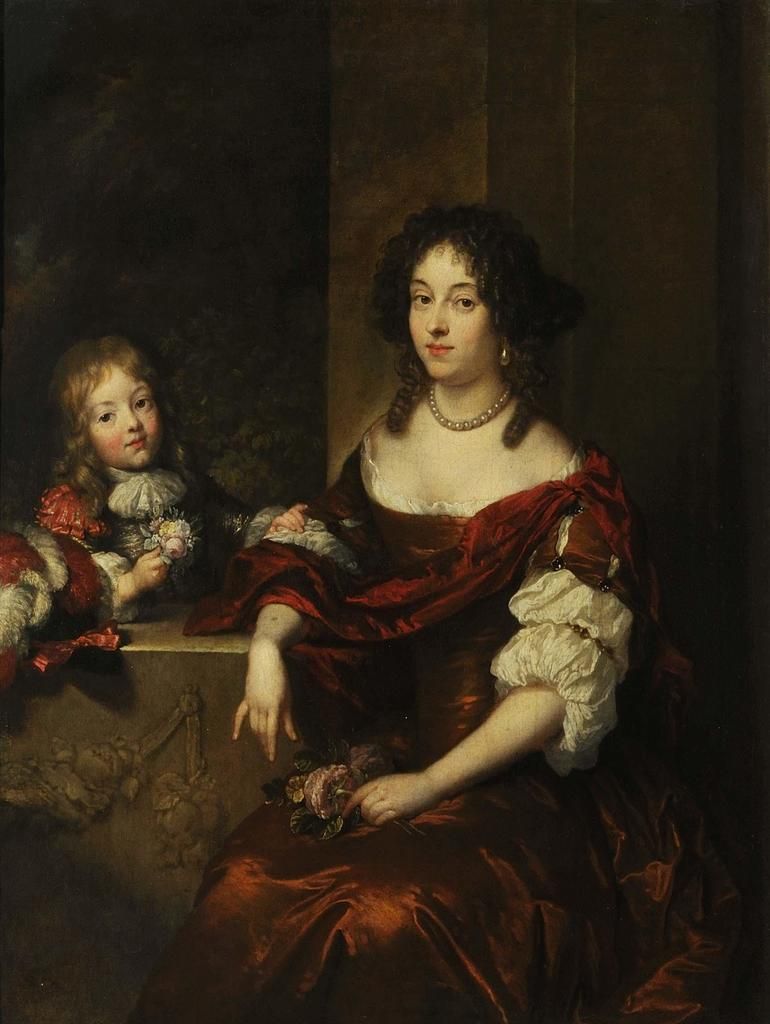
A Lady Seated before a Window, with a Young Boy
Caspar Netscher was the most sought-after portrait painter in the Dutch city of The Hague. This finely dressed lady and child demonstrate Netscher's debt to the aristocratic portrait-style developed by Anthony Van Dyck and his followers. The background details are characteristic of Netscher's staged compositions, which sometimes contain subtle meanings.
The pomegranate decorating the stone wall on the left is a symbol of chastity; whilst the roses held by the pair are a symbol of love. Such general symbols were often used in female portraits making the identification of individual sitters difficult. It was once thought to show the mistress of Charles II, Louise de Kéroualle, the Duchess of Portsmouth. However, Netscher did not come to England, and only painted English sitters who travelled to the Netherlands, which did not include the Duchess.
The quality of the painting suggests the work is by Netscher with studio assistance. By this date, Netscher employed several assistants to meet demand for his work. The composition is closely related to another portrait of 1676 thought to show one of Cornelis II van Evertsen's two wives (present location unknown). The Waddesdon painting is probably the picture recorded as having been in the J. Smies and others sale, Amsterdam, 24 February 1834. The painting appears in the 1910 'Catalogue of Principal Pictures, Furniture, China and other works of art at Waddesdon Manor' but not in the 1906 edition, suggesting it was purchased by Alice de Rothschild between these two dates.
Phillippa Plock, 2012
1675
Oil on canvas
475.0 x 385.0 mm
8087
Images and text © Waddesdon Manor, 2017
Where you'll find this

Permanent collection








